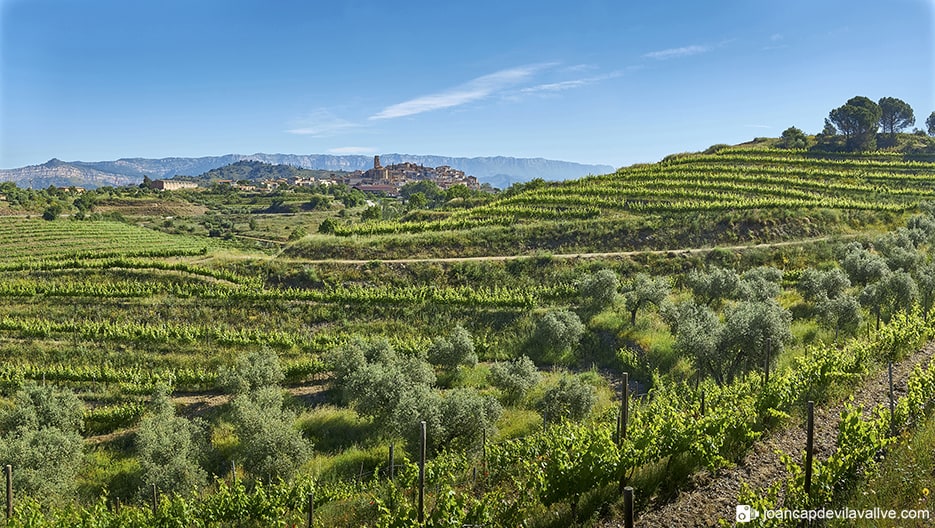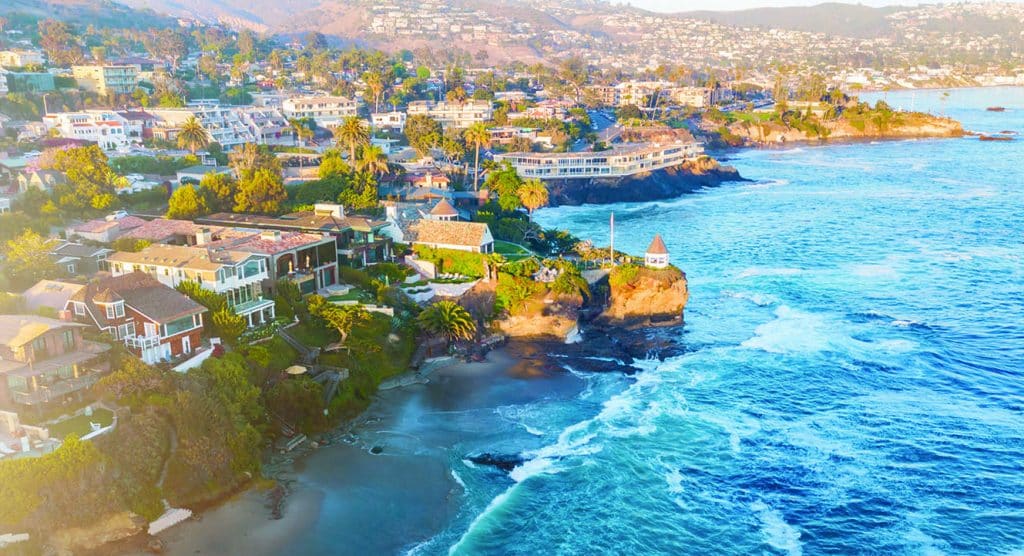
Today, it may be primarily frequented by day visitors and those in the know from Barcelona and other nearby cities, but Priorat in Spain’s northeast region of Catalonia, has held the attention of the world of food and wine for some time now.
Mediterranean Priorat is likely more recognized among wine fans than gastronomes, it is an area with a tradition for wine making. More recently a new wave of restaurants has emerged, making a fascinating food and drink scene.
The Tourism Office of Priorat asserts that the number of restaurants in the area has not changed much in the last 20 years, remaining at around 50, with the odd peak and trough. However, there has been a shift in the nature of the restaurant scene. “Years ago, restaurants here served all traditional Catalan food, and while this element remains, we now see a different cuisine has emerged, accented by fusion and modern techniques,” explains Cristina Beltran Ruis, who is responsible for the Oficina de Turismo (Tourism Office) of the Priorat region, adding there’s a 50/50 split between the traditional and the modern.
The elevated restaurant scene has been brought along by the wine industry, which was revived some 50 years ago. Wine production in Priorat lay dormant for a long time and was restarted in the 1970s by a group of pioneers who took a punt on the region, as told in the documentary Priorat, Dreaming of Wine.
In the film, Thomas Matthews, then executive editor of Wine Spectator, says, “Priorat was re-energised by these hippie outsiders with a dream and a dollar.” Among them was Rene Barbier who built the now famous wine brand Clos Mogador.
A rich history
There’s a convoluted story behind the wines of Priorat where wine has actually been produced for more than 2,000 years – starting with the Romans who made the old port of Tarraco into the equivalent of what Hong Kong was to the British empire: today’s Tarragona – the capital of the eponymous province where the Priorat is set – exported wine, almonds and olive oil for the delight of the Roman emperors. Hundreds of amphoras, made with a pointy bottom so they could stand in the sand, were left on the Tarraco beaches ready to be loaded onto Roman ships.
The glory days across the Mare Nostrum (the Roman name for the Mediterranean), disappeared with the decline of the Roman Empire, only to take off again in the 12th century in the same way that most ancient Greek and Roman culture was revived: by the church.
The order of Carthusian monks settled in the region and started producing wine next to its monasteries. One of them, the Charterhouse of Escaladei can be visited.
Similarly, Cistercian monks started cultivating wine in the nearby monastery of Poblet. The area’s unique, mineral, red soil is these days used by the Torres family to produce its excellent Grans Muralles in the manicured vineyard next to the monastery’s medieval walls (Grans Muralles means ‘great walls’ in Catalan). This religious tradition is what gave the region its name – priorat means priory in English.
The area’s winemaking and olive oil production continued to develop up to the 20th century, when cooperatives were formed in the 1930s during Spain’s Second Republic. Following Barcelona architect Antoni Gaudí’s style, some cooperatives built modernist headquarters, such as the one in Falset, still today capital of the Priorat region.
Neglect, then revival
The region’s growth, however, suffered the same fate as the rest of Catalonia following General Franco’s victory in the 1936-39 Spanish Civil War. The last region to stand against the dictator, Catalans suffered four decades of repression and low investment that finally ended with the general’s death and Spain’s return to democracy.
In 1989, Rioja winemaker Álvaro Palacios settled in Priorat – he was in search of somewhere less industrialized to produce wine and was attracted by the potential of the mineral soil. He started working alongside Rene Barbier and his colleagues. “Priorat is a region with a long wine tradition, but for historical reasons it is one of several regions that were forgotten. Essentially, after the civil war, only the Rioja region was known for its wine, the rest were forgotten and only for national consumption,” he said in a 2013 interview with wine writer Piero Sini, explaining why he made the move to Priorat.
Treasures to discover
The mountainous landscape and remote location made it a difficult and expensive project, but his first vintages achieved such quality that many followed. Gratallops, (once the name Catalans used to indicate somewhere remote – like Timbuktu), became a magnet to food and wine entrepreneurs who moved to the area to open gourmet shops and rural-cool restaurants.
“Through my travels I realized that Spain had many treasures to discover and that is why I went to Priorat,” reflected Palacios. “When I tasted the wine, I thought, there is a rough diamond here.”
The wines of Priorat are getting plenty of international attention. As recently as 2021, the Wine Spectator’s list of 2021 Top 100 wines counted just one Spanish wine in the top 10, Priorat Desti 2018 by Merum Priorati, which was ranked fourth.
A new gastronomic era
This explosion in the area’s wines has heralded a new dawn for restaurants. “These higher-level restaurants have been developed as a consequence of the prestige of the wines we produce in Priorat,” says Ruis. “20 years ago there was no demand for these sorts of places as the people didn’t visit.”
A new energy has settled on the principal town Falset, which has again become a trading hub, and its Fira del Vi, an annual wine and food fair in late April/early May, has now become a major local tourist attraction. Over the past few years, other wine makers have vastly improved their visitor experiences; Buil & Giné is a good example.
Ruis says one point of difference is that the new wave of restaurants are run by chefs who have trained and worked at a high level elsewhere. She points to restaurants including El Celler de l’Aspic in Falset, Brots in Poboleda, Amics in Gratallops and Els Tallers in Siurana. In the 2021 edition of the Michelin Guide to Spain and Portugal the region received its first Michelin star when Quatre Molins, a modern restaurant in Cornudella de Montsant, was rewarded.
Ebro River delta
Rafel Muria, the young chef behind Quatre Molins, is one of the new generation of chefs that Ruis refers to – trained in the highly acclaimed Hoffman culinary school, he took over the restaurant in 2018, aged 23. “El Priorat is a wonderful place, full of culture, wine and gastronomy – and so many parts to discover,” he said when the restaurant was awarded the Michelin star. “When we opened here, we weren’t thinking of achieving Michelin stars; we moved here with the region in mind, trying to add value with all the experience we have gained around the world over the years. Our idea was to elevate El Priorat to the gastronomic heights it deserves.”
Another unpolished gem in the region, with gastronomic treasures to reveal, is the Ebro River delta. The Ebro is Spain’s longest river, and its delta, where it meets the sea, has a unique soil formed from the sand and stones carried along its 800km course. This unique soil produces rice – especially, the round, white grain used in paella and other dishes.
Sophisticated food experiences
The delta area, only populated since canals were built about 200 years ago, remains an area of outstanding beauty, dominated by the river and the food produced there.
Apart from rice, the Delta is a leading mussel, eel and prawn producer. There’s a blossoming gastro tourism movement underway and visitors have the opportunity to take a boat to a mussel farm, set out in the sea, to observe how the mussels attach themselves to the wooden poles that support a deck where tasting menus and cava are served.
The delta offers worldly seafood experiences; among them is the classic El Pescador “Marisqueria Angelina”, while Casa Nuri, just on the river bank, before the Ebro meets the sea, is an excellent place to share a fideua (a delicious noodle dish) or black rice with family and friends.
While millions of tourists descend on Barcelona, Costa Brava and the Costa del Sol beaches in the south, the Priorat-Delta region remains a culinary jewel awaiting discovery, highly appreciated by proud locals and those in the know. It’s unlikely to stay that way for long.
Tina Nielsen




